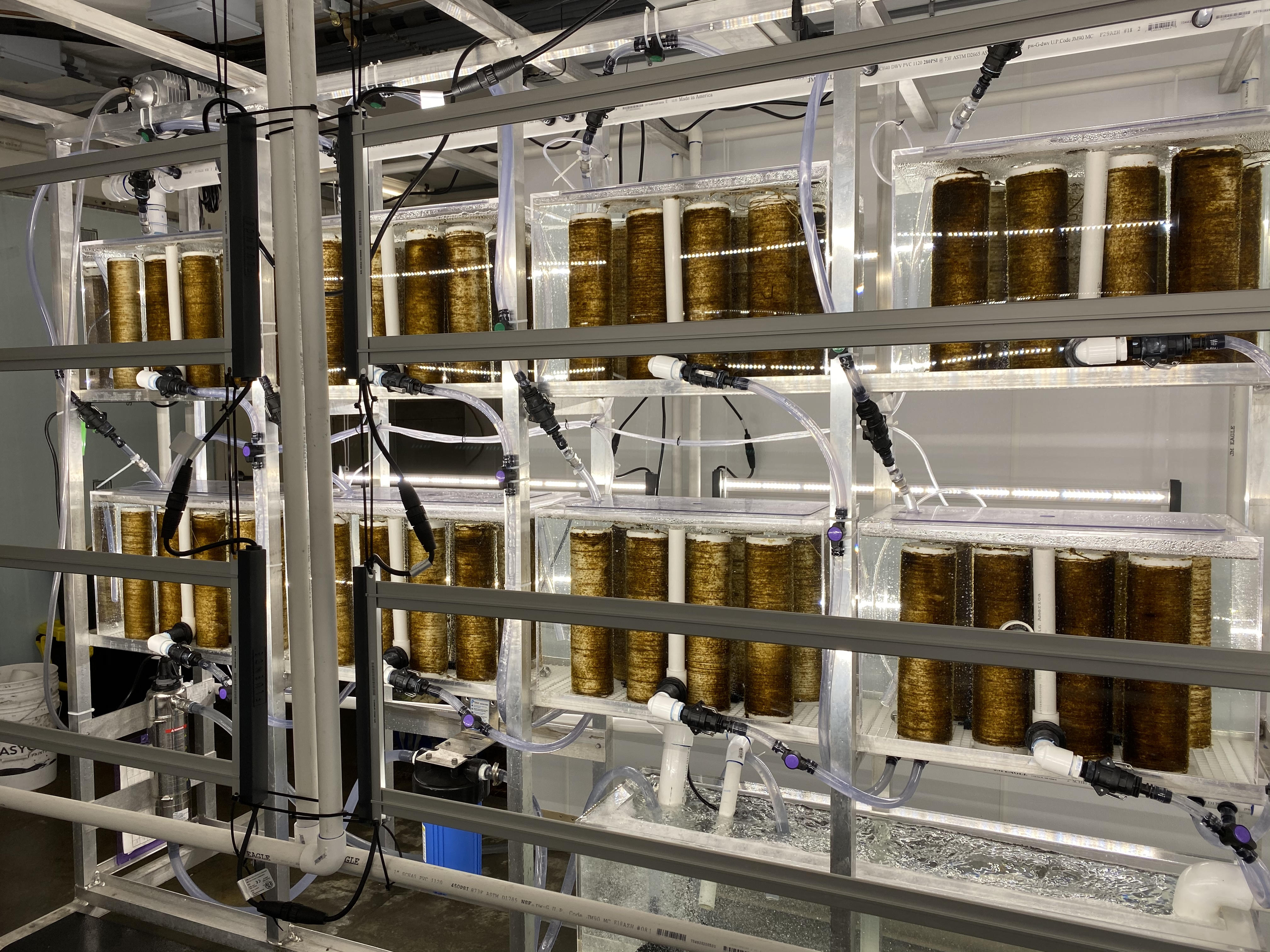Estimated reading time: 4 minutes
Seaweed, a term for marine algae, has been used by Alaskans as a source of food and materials for centuries. Recently, the farming of seaweed has gained attention for its commercial, food security, and climate change mitigation possibilities. Alaska presents an ideal location for the seaweed farming industry, as it has the longest coastline in the United States and more than five hundred species of seaweed. One such species is kelp, a common type of large, brown, seaweed. Some of the largest kelp beds in the world are found in Alaska. Different types of red, green, and black seaweed are also farmed and gathered in Alaska. Seaweed production does not require fertilizer, fresh water, or arable land. Alaska has cold, fertile waters, lively community waterfronts, and a skilled maritime workforce interested in pursuing mariculture (the cultivation of fish and marine life for food). As such, Alaska could be at the cutting edge of the growing seaweed farming industry in the United States.
Seaweed farming is expanding quickly and is expected to continue growing in the coming decades. In Alaska, there has been a marked increase in the number of applications for seaweed farming permits.
How can seaweed help Alaskans adapt to a changing climate?
While seaweed mariculture does not yet have the scale to play a global role in climate change mitigation, there may be potential to locally sequester carbon, depending on the farming practices implemented. Seaweed farming may prove effective in climate change mitigation and adaptation due to the number of benefits associated with farming it.
Seaweeds:
- Can contribute to food security and Alaska Native tribal sovereignty because seaweeds grow quickly and, in some cases, have a high protein content (some red, green, and brown seaweeds)
- Can capture carbon dioxide from the marine environment
- Can reduce and prevent ocean acidification and de-oxygenation, which threaten marine environments (some brown, red, and green seaweeds)
- Certain types can be used for biofuel production, with the potential to reduce emissions from fossil fuels (brown seaweed - kelp)
- Can reduce methane emissions from cattle and sheep when added to feed (some red seaweeds)
- May create marine habitat and mitigate coastal pollutants (some red, green, brown, and black seaweeds)
- Can lower wave energy and act as buffers against coastal erosion (brown seaweed - kelp)
The macroalgae of many uses
Seaweeds are used in several products, including:
- Food products: hot sauce, roasted kelp snacks, pickles
- Soaps and lotions
- Food colorants
- Gelling and thickening agents
- Organic fertilizers
- Soil amendments
- Bioplastics
- Other bioextracts
Alaska Natives are at the cutting edge of farming seaweed in Alaska. Programs like the Native Conservancy’s Indigenous Food Sovereignty program provide support to Native farmers for growing kelp in Alaska. Prior to farming seaweed, Alaska Natives have harvested and used seaweed for time immemorial. The Haida, Tlingit, Tsimshian, Eyak, and Alutiiq people use seaweed as food, trade items, fibrous material, and food storage. Black seaweed is a particularly important wild-harvested food. Other wild-harvested seaweeds in Alaska include bull kelp, giant kelp, and red ribbon seaweed. Seaweed collection is a significant time of the year for many Alaska Natives, and many culturally important foods and ceremonies depend upon the continued existence of seaweed.
How do Alaskans farm kelp?

Sugar, ribbon, and bull kelp are the most farmed species of seaweed in Alaska, though interest in species like black seaweed is increasing. To begin a kelp farm, mature kelp with reproductive tissue (also known as sorus) are collected from the wild (within 50 miles of the farm) and transported to a kelp hatchery. At the hatchery, the reproductive tissues are encouraged to release spores. Eventually, these spores grow into kelp seed on spools of nylon twine. Farmers then wrap the seed twine around lines that are placed about 10 ft underwater at the farm site. Seed-out usually occurs during October through November. Some kelp can grow up to 15 ft long by the time of harvest in April through June. Since the growth cycle of Alaskan seaweed is fall to spring, seaweed farming is compatible with seasonal fishery employment and provides an opportunity for year-round employment to seasonal employees.
Kelp farms require regular visitation and observation by farmers. Protected bays and inlets are preferred areas for kelp farmers because of ease of access. However, there are additional site-location factors that may need to be considered to support kelp biology (e.g., increased water flow and high nutrients). Check the site assessment toolkit to improve kelp farm site selection to access site-related information for those interested in starting a kelp farm.
Site assessment toolkit to improve kelp farm site selection is a toolkit from Alaska Sea Grant that provides resources for assessing potential kelp farm sites.
Seaweed Handling and Processing is a guide for handling and processing seaweed in Alaska from Alaska Sea Grant and University of Alaska Fairbanks.
Assessment of Seaweed Processing Locations in Alaska provides information on various locations of seaweed processing from the Alaska Fisheries Development Foundation.
The Regenerative Ocean Farming Hub from Greenwave offers training, tools, and community for aspiring ocean farmers, including seaweed farmers.
USDA Rural Business Development Grants provide funding for technical training and assistance to small rural businesses.
USDA Small Business Innovation Research Grants provide funding to qualified small businesses to support high quality research related to important scientific problems and opportunities in agriculture that could lead to significant public benefits. Check out this example of a funded seaweed farm research project in Maine.




